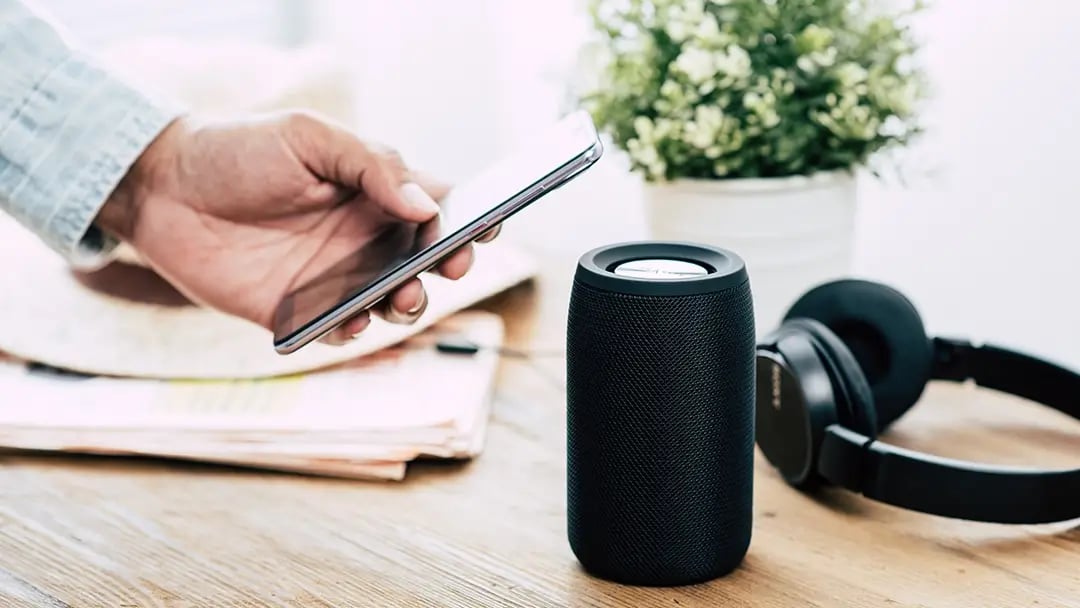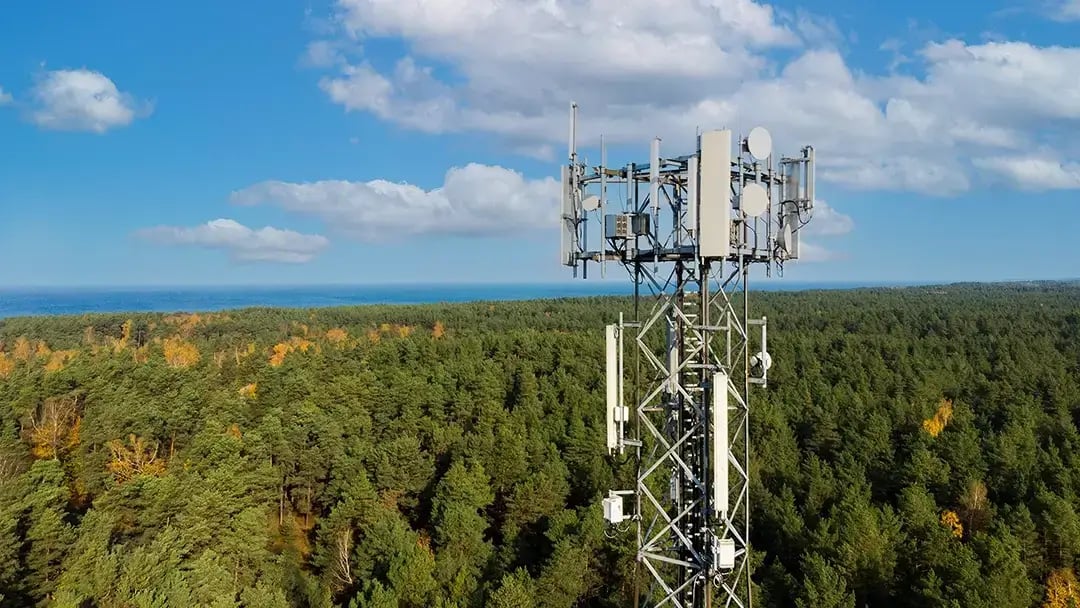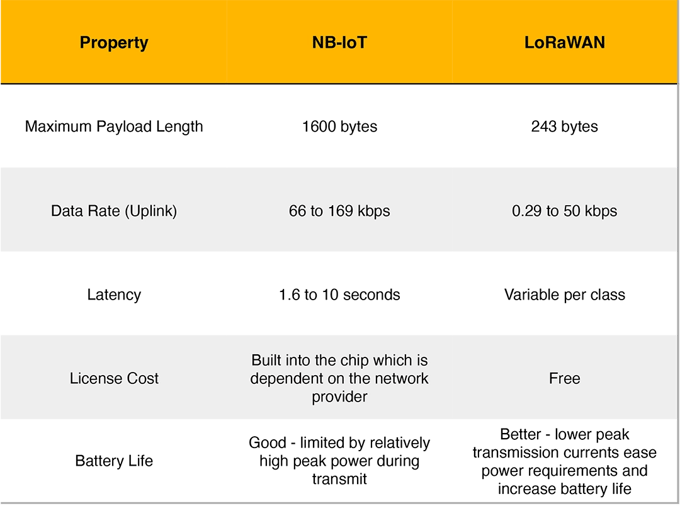IoT water leak detectors come in many variations, like flood, in-line, cable or sheet sensors. Choosing the right water leak sensor is essential to effectively protect a building. How the sensor sends leak warnings is a crucial part of this decision, as it determines the solution’s lifetime and the kind of data transmitted, as well as any extra infrastructure requirements.
We recently conducted a market-wide study comparing the key features of different types of sensors. A key finding is that LoRaWAN is the most popular communication protocol for smart water leak sensors, with a number of properties that contribute to its popularity, including low power consumption, low cost and wide ranges.
However, other communication protocols like WiFi, NB-IoT and LTE-M have different qualities that are well suited to specific use cases. Furthermore, as one device can support multiple communication protocols, it may be a question of which protocols are the most beneficial together.
An overview of communication protocols in water leak sensors

The two overarching categories of communication protocols implemented in the researched water leak detectors are LANs and LPWANs.
- Local Area Networks (LANs): Short-range communication methods with high data rates.
- Low Power Wide Area Networks (LPWANs): Long-range communication methods for low power and data rate requirements.
- Licensed LPWANs: One category of LPWANs that operates on public cellular networks.
- Unlicensed LPWANs: The other category of LPWANs that operate on the unlicensed frequency spectrum.

Our findings clearly illustrate that LoRaWAN devices currently dominate the water leak sensor market.
Next, we’ll dig into each communication protocol and its suitability for use with water leak sensors.

LANs
Local Area Networks (LANs) include networks like WiFi and Bluetooth and usually connect devices in a single room or building.
In terms of data transmission, WiFi is much more favored over Bluetooth, with data rates 20 times larger and with wider ranges of up to 32 meters. WiFi infrastructure is also more readily available in most residential and commercial areas, so configuration is familiar to facilities managers.
Despite WiFi’s great performance, high data rates that can handle streaming videos are unnecessary for most IoT devices sensing water leaks. And this higher capacity means that ranges and power efficiency suffer considerably.
Bluetooth is only well-suited if the device doesn’t need to transmit data beyond 10 m with higher bandwidths. It’s a very energy-efficient communication protocol, but the energy-efficiency is actually much better demonstrated in LPWANs.

LPWANs
LPWANs allow devices to send small amounts of data over a large distance in a more energy-efficient way than LANs. These qualities match perfectly with the requirements of a typical water leak sensor:
- Sending data infrequently.
- Sending small data packets.
- Requiring multiple devices.
- Sending over longer distances of up to 1km.
In the study we conducted, 70% of reporting sensors were LPWAN devices. Furthermore, out of the 21 LPWAN devices, a majority of 19 were non-licensed LPWAN solutions.
Licensed LPWANs: NB-IOT and LTE-M
Licensed LPWANs operate on predefined exclusive frequencies, making their connections less likely to experience interference than unlicensed networks. While licensed LPWANs can be useful for mobile devices because they also use cellular communication, it’s not necessary for the water leak sensing use cases.
Of the two licensed LPWAN protocols, one employs NB-IoT and the other LTE-M.
NB-IoT uses a narrowband technology, (with a bandwidth of 200kHz), meaning it has an increased density of transmission power that makes it better for indoor applications. Meanwhile, LTE-M operates at a much higher bandwidth (1.4MHz), meaning it can handle much higher data rates (384-1000 kbps) than NB-IoT (less than 200 kbps).
Generally, both NB-IoT and LTE-M have higher payloads, data rates and lower latencies (time to receive data) than unlicensed networks. This means that they’re capable of sending more data more frequently. While this may be useful in use cases that need cloud computing, it’s usually overkill for sensing water leaks.

Unlicensed LPWANs: LoRaWAN & Sigfox
Of the unlicensed LPWANs available, LoRaWAN solutions are the most prevalent, with 17 reported solutions available, compared to just two Sigfox solutions.
LoRaWAN
LoRaWAN uses sub-GHz frequencies and long-range radio modulation techniques to communicate with gateways. This enables great power efficiency while maintaining reliable communication. And while LoRaWAN is usually compared to NB-IoT due to their similarly robust performance, there are quite a number of differences that contribute to the higher adoption rate of LoRaWAN for water leak sensors.

Although NB-IoT has lower latencies, higher data rates and better performance in dense urban areas, LoRaWAN outperforms it in power efficiency, cost and ease of setup.
LoRaWAN’s payload size shows that it’s capable of providing more than enough information at short enough intervals for water leak sensors, while also offering much better power efficiency and longer battery life.
Cost is a major comparison point between LoRaWAN and NB-IoT that varies with use case. LoRaWAN’s open standards and lightweight protocol can make these networks cheaper to operate, particularly when compared to NB-IoT networks that incur connectivity costs from cellular providers. Also, as LoRaWAN gateways can easily be set up anywhere at a modest cost, signal coverage can be extended in areas such as underground sites, or where there's no cellular connection.
However, one situation where NB-IoT would serve water leak sensors well is in rural deployments that monitor buildings spread at a low density. Here, using an existing NB-IoT configured tower (if available) would be more cost effective than multiple LoRaWAN gateways distributed amongst the buildings.

Sigfox
Sigfox, as the alternative unlicensed LPWAN, is an ultra-narrow band technology that runs over a public network between 868 MHz and 902 MHz. When compared to LoRaWAN it offers some advantages: a lower cost, longer range and potentially better power efficiency.
However, there are also significant disadvantages. Sigfox is limited to a low data rate of 30 times less than LoRaWAN, and has a maximum payload of 12 bytes. Furthermore, Sigfox’s restricted amount of downlink messages and probability of interference mean that it has to transmit multiple messages, making actual power consumption higher than LoRaWAN.
Which communication protocol did LAIIER choose?
The core benefits of our sensing technology lie within our unique, flexible printed sensors. But how quickly and effectively our data-rich insights reach our customers is equally as important. We’ve dedicated significant expertise to communication protocol selection, and have chosen to incorporate LoRaWAN into our Severn Water Leak Detectors.
While we have full confidence in LoRa technology, we’re acutely aware that communication protocols will continue to develop. With this in mind, we also remain flexible, ready to adapt and incorporate new protocols to serve our customers’ use cases.
Want to dig into more detail of how Severn WLD uses LoRaWAN? Book a call with our team.